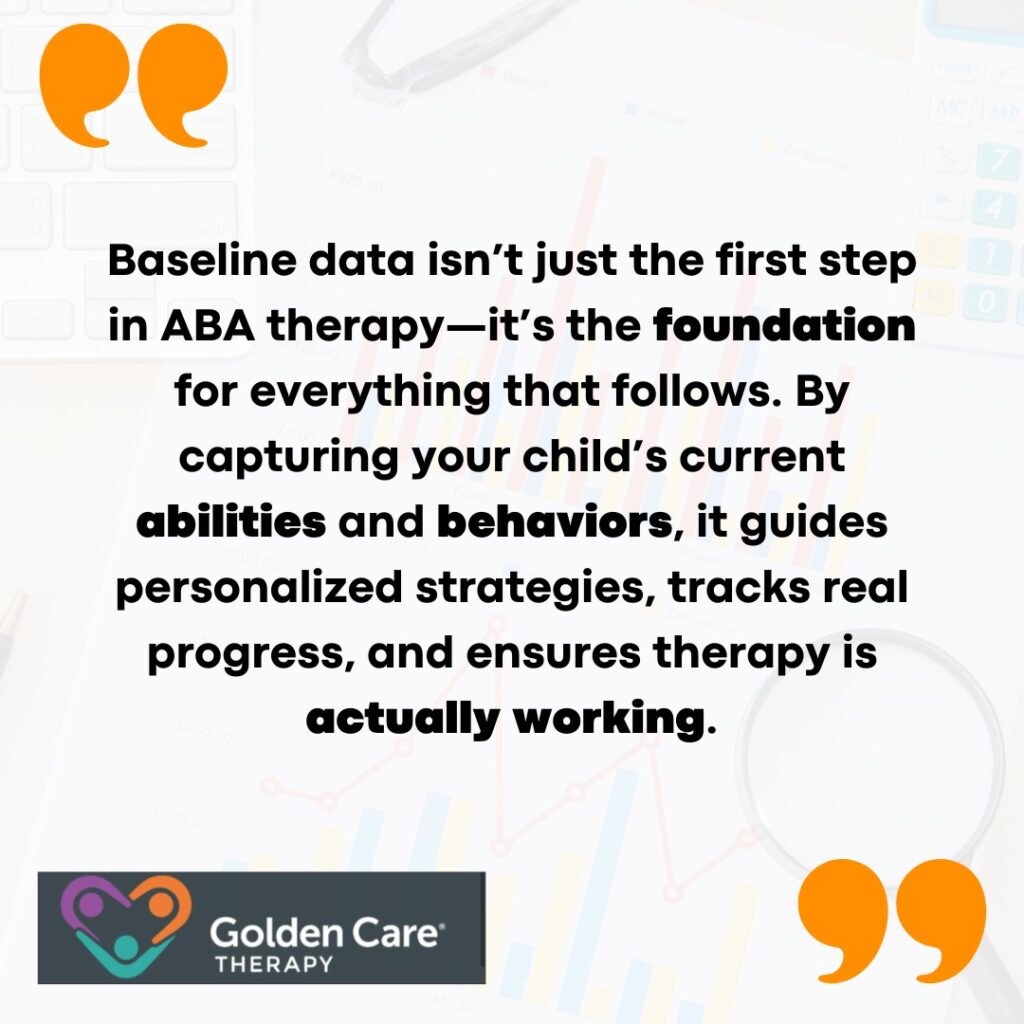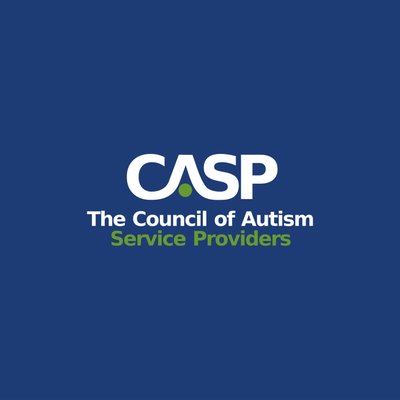Key Points:
- Baseline data in ABA therapy is essential for understanding a child’s current skills and behaviors before intervention.
- Collecting baseline data involves direct observation, structured assessments, and caregiver input.
- This data guides the development of personalized ABA therapy plans and measures progress over time.
- Consistent data collection methods ensure accuracy and reliability in tracking behavioral changes.
Baseline data ABA is like a roadmap for your child’s growth. By measuring their current skills and behaviors, therapists can create a personalized plan that targets their needs. It’s the first step toward meaningful progress and a brighter future for your child.
What Is Baseline Data in ABA Therapy?
Baseline data in ABA therapy refers to the initial measurement of a child’s behavior or skill level before any intervention is implemented. It provides a clear picture of where the child is starting, allowing therapists to set realistic goals and track progress effectively. Without this data, it would be challenging to determine whether the therapy is working or if adjustments are needed.
Baseline data is not just about identifying problem behaviors; it also highlights strengths and existing skills. For example, if a child can already follow one-step instructions but struggles with two-step instructions, the baseline data will reflect this. This information helps therapists tailor interventions to the child’s specific needs.
Why Is Baseline Data Important in ABA Therapy?
Baseline data serves multiple purposes in ABA therapy. First, it establishes a reference point for measuring progress. Without knowing where a child started, it’s impossible to determine how far they’ve come. Second, it helps identify patterns in behavior, such as triggers or environmental factors that may influence the child’s actions.
Additionally, baseline data ensures that therapy goals are individualized. Every child is unique, and what works for one may not work for another. By collecting accurate baseline data, therapists can create personalized plans that address the child’s specific challenges and strengths.
How to Collect Baseline Data in ABA Therapy
Collecting baseline data requires a systematic approach to ensure accuracy and reliability. Here are the most common methods used in ABA therapy:
1. Direct Observation
Direct observation involves watching the child in their natural environment, such as at home or school, to gather information about their behavior. This method is particularly useful for identifying triggers and antecedents that lead to specific behaviors.
- ABC Data Collection: This stands for Antecedent, Behavior, and Consequence. It involves recording what happens before, during, and after a behavior to understand its function.
- Frequency Counts: Tracking how often a behavior occurs within a specific time frame.
- Duration Recording: Measuring how long a behavior lasts.
2. Structured Assessments
Structured assessments are standardized tools used to evaluate a child’s skills and behaviors. These assessments provide a more formalized way of collecting baseline data.
- VB-MAPP (Verbal Behavior Milestones Assessment and Placement Program): Assesses language and social skills.
- ABLLS-R (Assessment of Basic Language and Learning Skills-Revised): Evaluates a wide range of skills, including communication and self-help.
- Functional Behavior Assessment (FBA): Identifies the purpose or function of a specific behavior.
3. Caregiver Input
Parents and caregivers play a crucial role in providing information about the child’s behavior outside of therapy sessions. Their insights can help fill in gaps and provide context for the data collected through observation and assessments.

How to Use Baseline Data in ABA Therapy
Once baseline data is collected, it becomes the foundation for creating an effective ABA therapy plan. Here’s how it’s used:
1. Setting Goals
Baseline data helps therapists set realistic and measurable goals. For example, if a child can currently complete one-step instructions 50% of the time, a goal might be to increase this to 80% within three months.
2. Designing Interventions
The data guides the selection of interventions that are most likely to be effective. For instance, if the baseline data shows that a child engages in tantrums to escape demands, the therapist might use strategies like task modification or reinforcement to address this behavior.
3. Tracking Progress
Baseline data serves as a benchmark for measuring progress. By comparing current performance to the baseline, therapists can determine whether the intervention is working or if adjustments are needed.
4. Communicating with Caregivers
Sharing baseline data with parents and caregivers helps them understand their child’s starting point and the rationale behind the therapy goals. It also keeps them informed about progress and areas that may need additional focus.
Tips for Effective Baseline Data Collection
To ensure that baseline data is accurate and useful, follow these best practices:
- Be Consistent: Use the same methods and tools each time you collect data to ensure reliability.
- Collect Data Across Settings: Observe the child in different environments to get a comprehensive understanding of their behavior.
- Involve Caregivers: Encourage parents and caregivers to share observations and participate in data collection when possible.
- Document Everything: Keep detailed records of all observations, assessments, and caregiver input.
Common Challenges in Collecting Baseline Data
While baseline data is essential, it’s not always easy to collect. Here are some common challenges and how to address them:
- Inconsistent Reporting: Caregivers may provide conflicting information. To address this, use structured interviews or questionnaires to gather consistent data.
- Environmental Factors: Behaviors may vary depending on the setting. Collect data in multiple environments to account for these differences.
- Time Constraints: Collecting baseline data can be time-consuming. Prioritize the most critical behaviors and skills to focus your efforts.

How Baseline Data ABA Drives Success in Therapy
Baseline data is the backbone of effective ABA therapy. It ensures that interventions are tailored to the child’s unique needs and provides a clear way to measure progress. By investing time in collecting and analyzing this data, therapists can create more impactful and meaningful therapy plans.
If you’re looking for a trusted partner to guide your child’s ABA therapy journey, Golden Care Therapy is here to help. Offering ABA therapy services in Indiana, New York, New Jersey, Georgia, and Florida, we specialize in creating personalized therapy plans based on comprehensive baseline data aba. Our team of experienced therapists is dedicated to helping your child reach their full potential.
Contact us today to learn more about our services and how we can support your family. Let’s work together to make a difference in your child’s life!



